You hear these “bad words” in real estate all the time. From HGTV shows, to consumer reports, and in “how to guides;” these items are going to scare you into submission.
Let’s take a look at what they are, why they’re bad, and whether the response is overblown.
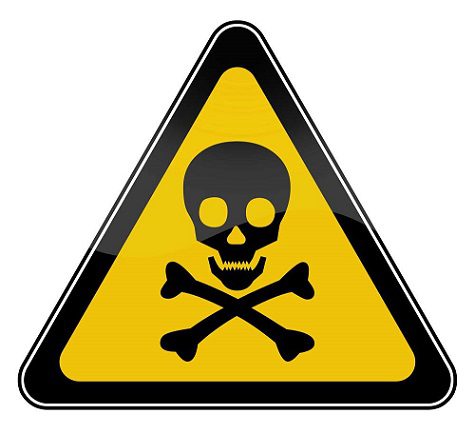
I was in a house the other day that had a “his” closet in the master bedroom, and a “hers” closet in the second bedroom.
My clients decided that this house wouldn’t work for them as a result, and I asked them to reconsider.
“This is a $700,000 asset you’re looking at, and you’re worried about, maybe, $2,500 in custom-closet renovations?”
They looked at each other, smiled, and shook their heads a bit. They admitted that perhaps they were being a bit too picky, and that, yes, they can do some work on the house.
Anything can be changed, whether minor or major.
It’s up to the buyer to decide what they want to take on.
Passing on a house because of the closet organizers is somewhat silly, but passing on a house because it’s filled with mold from head-to-toe is a good reason! Or, maybe it’s not. Maybe to a professional renovator, one man’s mold is another man’s jackpot!
Again – every buyer is different, but the one conclusion I will draw is this: no problem is un-fixable.
Consumer reports, TV shows, and newspaper advice columns will often put the fear of God into today’s home-buyer, but I urge them to research what these “deal-breakers” are before they label them as such.
Knob and tube wiring, for example, isn’t a deal-breaker. Not even close. I just sold a $1,350,000 house that had knob and tube wiring estimated to cost $15,000 to remove, and we got a full-priced offer after two days on the market. Do you think that buyer was scared off by the big, bad buzzword “knob and tube?”
I’m not saying you should buy a house that’s filled with lead pipes, but I am saying that all buyers should do their research on red-flag items.
Let’s take a look at the most common ones:
Knob & Tube Wiring
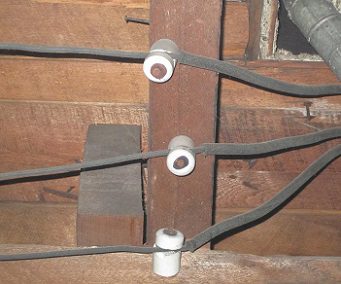
This is one of the most common “red flag” items you’ll see on watch-lists, and it’s certainly the biggest buzz-word in real estate today. The term comes from the white insulator “knobs” that are used to to keep the wires away from other objects (today’s wiring is stapled to joists), and the ceramic “tubes” that make holes through the wooden floor joists which they’re attached too.
The wiring dates back to pre-1960’s homes, and is usually more common in 60-amp service.
The major safety concern with knob and tube is that there is no ground wire.
There’s a hot wire, which is black, and a neutral wire, which is white, but no ground wire as you’d find in newer wiring like what is used today. These two wires – the black and white, run separately to electrical items, whereas today’s wires contain one plastic sheathing with the black, white, and ground wires all in one.
The hazard concern is threefold:
1) The black and white wires can make contact
2) The insulation around the wiring can break down with age
3) The material insulating the wire is made of asphalt-impregnated cotton, which is highly flammable.
All of these issues can cause fires, which is why the wiring is often replaced.
If you ask a home inspector or electrician, they might tell you that knob and tube wiring isn’t nearly as dangerous as its made out to be. I’ve had dozens of people tell me this over the years, and some home inspectors have referred to the war on knob and tube as a “cash grab” by the insurance companies.
However, if you consider that many insurance companies won’t insure houses with knob and tube wiring, then the idea of a cash grab wouldn’t really make any sense. A couple of companies in Toronto specialize in insuring homes with knob and tube wiring, but the big ones won’t touch it.
Another myth about knob and tube wiring is that it’s incredibly invasive to remove; that you have to tear all your walls apart to replace it. This isn’t true, unless you’re hiring the worst contractor in the city.
Ureaformaldehyde Insulation (UFFI)
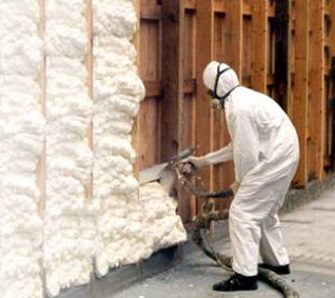
My own description of UFFI wouldn’t do it any justice, so here is an excerpt from www.west-end-times.com:
Since the early 80′s urea-formaldehyde foam insulation (UFFI) was banned in Canada and the USA. The Canadian ban is still in place while it is now legal again to sell UFFI in the USA and Europe. Whether it ever was or still is actually a health problem or not, it is still hurting real estate values, even where the stuff has been removed. Now, almost 30 years after it was installed, even if formaldehyde off-gassing was a health problem, there is absolutely no formaldehyde gas left in any walls in Canada today; UFFI is no longer even a potential health hazard. It should also have no detrimental effects on real estate values or even require any special precautions during renovation other than wearing of ordinary dust masks.
UFFI, like many other common household products, contains the ingredient formaldehyde. After UFFI began to be used in insulating and sealing houses in the mid 1970′s, some homeowners reported various health problems. Research was begun on this very common gas, formaldehyde. In high dosages, it was found to cause cancer in rats and mice. Health Canada and the US Environmental Protection Agency (EPA) set maximum acceptable levels for the presence of formaldehyde in homes, and, as a precautionary measure, UFFI was banned.
I’m not a scientist, health inspector, doctor, lawyer, or home inspector; I’m only reporting what I see!
But if you ask Carson/Dunlop, they might tell you that there’s nothing wrong with UFFI.
From their report, found HERE:
“The conclusion to be drawn from all this is that urea formaldehyde foam insulation has not been shown to be a health concern.”
However, UFFI has been prohibited from advertising, sale or importation into Canada under item 34, Part I of Schedule I to the Hazardous Products Act since December 1980. The prohibition includes all urea formaldehyde-based thermal insulation, foamed in place, used to insulate buildings.
There is also concern that UFFI may deteriorate when wet, and can release increased amounts of formaldehyde if installed incorrectly. As well, there is a related concern that the moist foam could support mould growth, which could in turn adversely affect the health of the occupants.
Asbestos
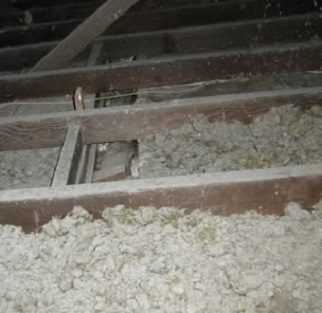
Here’s one red-flag item that I don’t think there’s any debate on.
Asbestos is poison, and while certain types of asbestos are still in use, and while “undisturbed” asbestos in your home may not be harmful, it’s something that has been medically proven to cause serious illness after prolonged inhalation.
Asbestos is a natural mineral – a “silicate” mineral, found in mines, and mined as far back as 4,000 years.
Its use became common-place during the Industrial Revolution of the 1860’s.
From Wikipedia: “By the mid 20th century uses included fire retardant coatings, concrete, bricks, pipes and fireplace cement, heat, fire, and acid resistant gaskets, pipe insulation, ceiling insulation, fireproof drywall, flooring, roofing, lawn furniture, and drywall joint compound.”
You can run a Google search and find equally as many web pages that say, “The response to asbestos in homes is over-blown” as you’ll find advising buyers to look past homes with asbestos issues, however the final decision rests with the home-owner.
I read a study on the Princeton University website that contained the following:
When left intact and undisturbed, asbestos containing materials do not pose a health risk to people working or living in buildings.
But as a home-owner, how do you look past the potential health issues? How do you know if asbestos is disturbed or not?
In my experience, home-buyers will consider homes with asbestos, but they won’t consider living there before the asbestos is removed.
Aluminum Wiring
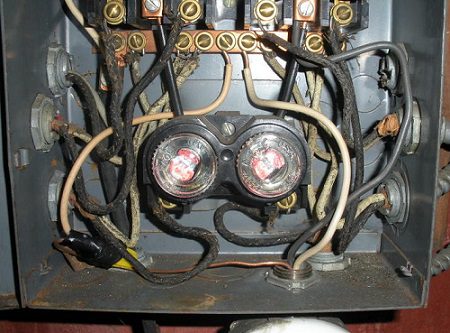
We find far more knob-and-tube wiring in homes as we do aluminum, but both present potential fire hazards, and both are frowned upon by insurance companies.
Copper wiring is today’s standard, but once upon a time, aluminum was used because it was cheaper, and lighter.
Aluminum provides a much better conductivity to weight ratio than copper (I’m not pretending to know what that means; I didn’t take grade-12 physics…), and for a while, it was used as an efficient alternative to copper.
Copper is a commodity, and is subject to price increases and decreases, just like gold, silver, or bushels of corn. So it seems to reason that at some point or another in the past hundred years, users looked for alternatives. And in the 1960’s and 1970’s, it wasn’t uncommon to see entire homes and offices wired with aluminum instead of copper.
But alas, as with knob-and-tube, aluminum wiring is a fire hazard, and while I don’t quite understand the basic theories of Thermal Expansion, you can read all about it HERE. As soon as I saw the drawing of the molecule/atom or whatever the heck it was, I said to myself, “Aluminum – Bad. Understood.” And that was about it.
Another issue with aluminum wiring is that many home-owners have removed some but not all of the wiring, and tried joining and/or combining it with copper. The two metals are dissimilar, and thus they don’t bond well, and can corrode over time.
As with knob-and-tube wiring, there are people out there that will argue, “It’s just a cash-grab by the insurance companies; there’s nothing really wrong with this wiring,” but most home-owners play it safe, and remove the wiring altogether.
.
The running theme here – with Knob-and-Tube, UFFI, Asbestos, and Aluminum Wiring, is that it’s up to the home-owner to decide what they can live with, and what steps they want to take to remedy any potential issue. Because after all, each of these items presents only potential issues, and nothing is guaranteed. Not every house with knob-and-tube is going to spontaneously combust, but I see massive premiums being paid for all the “flawless” homes in Toronto these days, so why would a home owner not remove a potentially hazardous item, and satisfy the entire buyer pool?





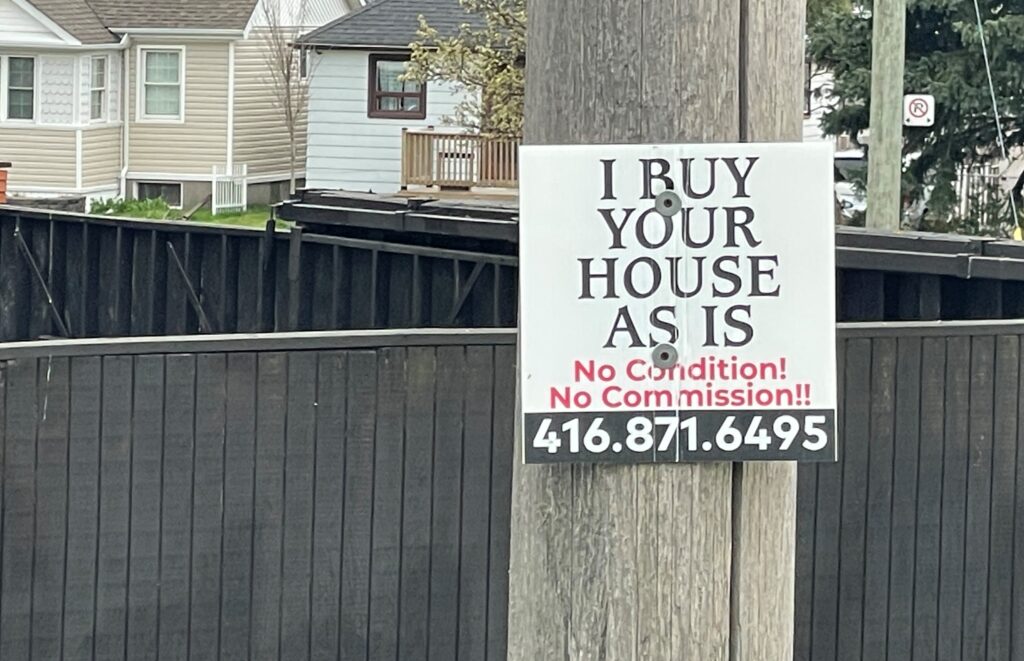

























Darren
at 9:17 am
You say that nothing can’t be fixed. What about former grow ops? I’ve heard that those are permanently black listed with insurance companies.
Perfect Fit
at 10:04 am
The problem with former grow ops is the state of the house upon the removal of said grow op. There are usually many, many problems. First: the electrical work is usually compromised in order to get free electricity, and to not alert Hydro that there is an unusual amount of electricity being used. Some may even cause structural damage in order to access the main feed to the house in order to do this.
Second, they will board up windows and vents in order to a) prevent passer bys from seeing, b) prevent excess heat loss, c) prevent the smell from escaping.
Third: the above mentioned boarding up prevents air circulation, which causes mould. Add water, and stir. Ever been to a hot house/botanical garden and been overwhelmed by the heat and humidity? Yeah, this is the typical environment encountered in a home that is a grow op, and mould thrives here. Typically this would require Level 3 mould remediation in order to eliminate it, if it is even feasible. It could be so bad as to require a complete tear down and rebuild.
Any one of the above listed issues will cause insurance companies to run away in panic waiving their hands in the air. Most grow-ops have all 3 happening. Simplest thing for them to do is to black list the house.
David Fleming
at 4:02 pm
@ Darren
I knew I left lead-pipes off the list, but I completely forgot about former grow-ops!
You’re right – this is, and should be, a deal-breaker.
Joe Q.
at 9:32 am
Replacing the private portion of a lead water-service pipe is about a $2-3k job, but fairly disruptive (may require breaking up the basement floor). In Toronto, the city will replace its portion at no cost to the homeowner once the private portion has been replaced, but there is a waiting list for this. Expect to drink bottled or filtered water for many months.
It’s not a big issue unless you have young kids or pregnant women in the house, in which case it is a major issue.
jeff316
at 9:41 am
In my experience we didn’t have much trouble finding insurance that would cover our knob and tube. The question was more about how much of a premium we were willing to pay for it. Some of the quotes were very expensive. We ended up replacing ours two years in – it wasn’t as invasive as some people made it out to be, but it wasn’t unnoticeable either, particularly in the hallways. If you have wallpaper it isn’t going to look good.
The thing is though, if you’re going to live in the house for the long-term, the likelihood is that at some point in your tenure you’ll have your insurance not renewed on the basis of the knob and tube. So the big question re: knob and tube is do you want to replace it on your terms, or someone else’s?
m
at 4:33 pm
I’ve had to deal with knob&tube, and asbestos. When we bought, we couldn’t find an insurer that was willing to insure us, unless we agreed to remove the K&T within a certain time period. I don’t remember the cost now, but the $15k you mention is probably about right. It might have been cheaper. The electrician we got was fantastic: he was very experienced with old houses, and made very small inobtrusive holes that were simple to patch up. I wouldn’t let that scare me off of buying a house.
For the asbestos, we were happy to leave it undisturbed, but then had to remove it when we got into a larger renovation. I learned a few things from that:
1) Cost varies *tremendously*, so it’s well worth it to get multiple quotes. I think the highest quote we got was $12k, and the lowest was under $3k. The guy with the lowest quote had very good references, and we were very happy with the quality of his work. He was meticulous, stuck to his price, and did it quickly.
2) After that experience, I’d much rather buy a place that has the asbestos intact and pay to remove it (properly). Then I know that it was done safely, and that there won’t be asbestos debris lingering in the house due to a shoddy removal. At another house I looked at, the owner said “Oh, I know some guys you can just pay under the table to come in and remove it. No permits, really cheap.” The last thing in the world I want to live with is shoddy asbestos removal. I’m not going to risk cancer for the sake of saving a couple thousand bucks.
DanO
at 6:32 pm
I love your thinking, but what do think about testing the air, say in a house that had a shoddy removal? If the test came back clear, would you be ok with that?
m
at 10:07 am
Air testing sounds like a good idea in theory. In practice, I’d have the following concerns.
1) Depending on the state of the market, you may have difficulty making a conditional offer, and you may not have time to get a test done before making an offer.
2) As a layperson, I found the testing result to be frustratingly ambiguous. My recollection is that there’s a regulation associated with Ontario workplace safety which states the maximum count of particulates of a certain size per square metre of air. The test result I received said the particulate count was within the Ontario guidelines, but that the test could not say what the particulates were. Nor could they provide any feedback as to whether this was a satisfactory result. If I wanted to know whether any of those particulates were asbestos, I would have to get a sample sent down to a lab in the US, at significant cost and time. In the end I decided to trust that he had done his job well, and that it was probably fine.
LL
at 4:34 am
can you provide the name of the asbestos company you used?
Thanks
mara
at 10:41 am
please accept my request for the name of your electrician re knob and tube removal.
thnx,
mara
Edwin
at 3:33 pm
Hi, please send me the phone number of your electrician guy, I looking for somebody to replace the knob and tub and asbestos, thanks.
Mike
at 7:44 pm
What about galvanized plumbing? Why did you leave that off the list? When I was looking at homes my agent mentioned that GP corrodes way faster than copper, and that can lead to a Flood!
David Fleming
at 1:12 am
@ Mike
I was already at 1,800 words! I considered a “part two,” but it seems like the readers are already assembling the list…
John B.
at 4:42 am
I agree with your statement that almost any house is saleable. It is just about finding the right person. There are many people who are searching for a location rather than a house, and their goal is to do house flipping by increasing its price. But this type of buyers depends heavily on a location of the property.
Also in many cases, the so called deal-breaker can be the ratio of crime in the neighbourhood or Asian bistro.
I think that you are right about knob and tube wiring not being a serious problem when buying a house. Actually, I read a piece about slashing a home price, and it does not even mention it as a potential way how to raise the home value. On the other hand, it mentions plumbing. I think more people are generally afraid of being flooded than their home being burned to ashes.
Frances
at 1:44 am
The house I live in was built in the early 1950’s and has standard copper wiring but it was a 2-wire house not 3-wire (no grounding wire). We have added several new circuits and they were done as 3-wire. It is now legally allowable to use ground-fault-interrupter sockets in the old 2-wire sockets and we have had all the most used ones replaced. Our main panel uses circuit breakers not fuses. So, if you come across a place with the 2-wire, they can be updated quite adequately.
Also, I think that the main problem with aluminum wiring was the connectors. It requires connectors especially designed for aluminum and, if used, should not pose any problems. You would need an electrician to check that things were done correctly.
Len Inkster
at 1:30 pm
Frances, you are correct in your analysis of Aluminum wiring. The problem is mainly the connection points where the wiring meets the panel or the receptacles and switches.
Copper and Aluminum expand and contract at different rates and as the wires and components heat up and cool down the Aluminum, connected to the wrong type of component literally “shakes itself loose”. This causes arcing, which can in turn start a fire.
Aluminum has a second characteristic in the fact that it oxidizes readily in air. The aluminum oxide coating that forms on the bare ends of an Aluminum conductor going into a connector (even one designed for Aluminum) is also an area that can cause arcing vis-a-vis a fire hazard.
The third thing is Aluminum is not as good a conductor as copper and so the wire size required to carry the same amount of current is bigger for an Aluminum conductor than a Copper conductor.
Often times people use the wrong size Aluminum conductor for the current and this then turns the conductor into an incandescent heater running in the walls.
While GFCI’s will help with ground faults and the lack of a ground wire, installation of an AFCI in a panel can assist with arcing issues such as those cause by faulty aluminum wiring. An AFCI is designed to detected an arc in the wiring, both between conductors and inline with a single conductor. When such an arc is identified, the AFCI trips. This gives a homeowner adequate warning that an electrician should be called to check out the components on that circuit, tighten connections and apply anti-oxidant paste as required.
Insurance companies have not yet caught onto this solution so are still refusing to insure, or charging higher premiums to, owners of homes with Aluminum wiring, when in fact an AFCI would provide protection from arc induced fires quite simply.
Len Inkster, CMI, CPI, IAC2 CITP
Certified Master Inspector
fppi.ca
Len Inkster
at 1:17 pm
In your section on Knob & Tube wiring you say that the major safety concern with knob and tube is that there is no ground wire.
This is in fact not accurate. There are a lot of wiring configurations since Knob & Tub that don’t have a ground wire, and while the risk is the same, they don’t have the same stigma as Knob & Tube wiring.
A circuit without a ground is dangerous because electricity always tries to find the fastest way to ground, the grounded conductor (neutral) is the usual path after powering an appliance. When an appliance fails in a certain way, it can lead to the neutral become either partially or completely disconnected, in which case the electricity tries to get to ground some other way. Without a ground wire the quickest way can often be through the user.
That said, this is not specifically a Knob & Tube issue.
The real concerns with Knob & Tube are caused by modifications made to the property since the original installation of the wiring.
You outline the hazards to be threefold, and while these concerns are not unfounded, again they do not apply specifically to Knob & Tube. I will explain:
1) The black and white wires can make contact – This is true, but is not likely as in Knob & Tube configurations the wires are kept apart by an air gap of at least 4″-6″ until they enter the receptacle boxes. At this point they any wire, incorrectly installed is likely to present the same problem. Indeed in more modern NM cloth wrapped and Romex wiring where either two or three conductors exist in the same wire, the likelihood of having the two wires connect is higher as nails and screws being driven into the wires will create the same problem. With Knob & Tube this is unlikely to happen
2) The insulation around the wiring can break down with age. Again this is a problem that affect all types of wiring, and is not specific to Knob and Tube. Having the wires separated by an air gap (or asbestos sheathing, see below) and ensuring the wires are segregated from other components by ceramic knobs and ceramic tubes (where Knob & Tube gets its name from) actually makes it a better solution when this happens, assuming the home is in the same condition as when the wiring was first installed.
3) The material insulating the wire is made of asphalt-impregnated cotton, which is highly flammable. While this is true, many Knob & Tube installations also have a secondary sheathing made up of an Asbestos bonded material which is fireproof and also shown in your photograph.
While all of the issues above could cause fires, it is not the reason why the wiring is often replaced.
The reason for removing knob & tube is simpler and more easily explained.
Knob & Tube wiring was installed at a time when power demands were lighter, and homes were not as well insulated. They were designed to carry no more than 15amps, and run in clear air spaces. Any more of a demand than 15amps, or covering the wiring in insulation turns the wiring into an incandescent heater, which is a fire hazard.
When Knob & Tube was installed, it was designed to run, end to end, with no joints or properly soldered joints, in the air gap between the floor joists, through the walls in the basement or crawlspace or in the attic. No insulation covered it.
Over time we have installed insulation around in, spliced into it to add extra circuits, often incorrectly and so on and so forth.
This is what makes knob & Tube the specific hazard it is. Nothing more and nothing less.
I am a Certified Master inspector and I will tell you that Knob and Tube wiring isn’t nearly as dangerous as it’s made out to be IF it is uncovered by insulation and not tampered with.
This is in-line with advice from the Electrical Safety Authority. Some home inspectors do refer to the war on Knob and Tube as a “cash grab” by the insurance companies, and to some extent this is true.
I have seen installations that were untouched, still running 60 amp fuse panels with no insulation, and the Knob & Tube works just as adequately now as it did 80+ years ago, but an insurance company won’t touch it.
I have also seen Knob & Tube installations where modern wiring has been spliced into it, with phantom grounds added, with wiring reversed, with 20 amp wires added to the Knob & Tube installations and with spray foam of all types surrounding it. All of these latter modification make the Knob & Tube a ticking time bomb. If an insurance companies refusal to insure is the only way to force owners to take corrective action in this situation then I say bring on the cash grab.
The proper way to remove Knob & Tube is to replace all of it top to bottom with modern wring solutions AND remove ALL old Knob & Tube wiring. The reason for the latter exercise is to ensure no remnants of energized K&T wiring is left in the home and redundant wiring cannot be accidentally re-energized in the future by a DIY enthusiast. Like it or not, this does require invasive and expensive modifications.
While it might impact your ability to get the optimum commissions you want from selling a home with dangerous K&T still installed, or even lose you the deal completely, identifying dangerous K&T and replacing it properly is the safe and right thing to do. Suggesting otherwise is a recipe for loss of life and serious litigation.
Len Inkster
at 1:48 pm
David, In your item you ask “As a home-owner, how do you look past the potential health issues? How do you know if asbestos is disturbed or not?”
I would answer this simply. You don’t have to. First and foremost, it’s airborne asbestos fibres that are the cause of Mesothelioma and Asbestosis. So you should find out if your home has any air-borne asbestos. This is a simple test, performed by many qualified IAQ consultants that come in, perform air sampling which is sent off to a lab for analysis. If there is air-borne asbestos then finding the source and remedying that source and re-testing is the correct plan of action.
If a home has asbestos vinyl floor tiles in the basement that are not damaged, or it is an older home that potentially has asbestos bonding in the plaster, or it has an asbestos fire sheet behind the electrical panel the these are areas that do not pose a threat to the home owner, no more than it has posed a threat to the countless home owners that have been exposed to these items since they were installed.
You say in your “experience, home-buyers will consider homes with asbestos, but they won’t consider living there before the asbestos is removed”. I would say that in my experience, if the source of asbestos is identified, properly explained along with the risks and causes for any heightening of those risk and mitigating actions that can be taken, then home owners that are not susceptible to scare-mongering paranoia would be prepared to not only consider, but also be more than happy to live in a property containing asbestos.
Those that aren’t should not look at buying a home built before 1973, and if they are than concerned about airborne carcinogens, they probably should buy a home built since then either, because they will obviously be concerned about Radon which is by far and above a bigger cause of lung cancer than Asbestos, and has been shown to build up quicker in modern, energy efficient, air tight homes.
Give me an old, leaky, asbestos filled home every day over one that is so air tight it allows an unhealthy build-up of a radioactive gas.
Disclosure: I sit on the Niagara Falls Municipal Heritage Committee in Ontario, was a member of the expert panel for regulation of the Home Inspection profession in Ontario and am a board member of the Ontario Association of Certified Home Inspectors (OntarioACHI – http://ontarioachi.ca ). I also am qualified to and perform Indoor Air Quality sampling for Mould, Asbestos and Radon.
Len Inkster, CMI, CPI, IAC2 CITP
Certified Master Inspector
fppi.ca
liegh
at 9:10 am
ANNONOMOUS: MY husband has been living in a unit paying full RENT that us being pocketed and this house is bring sold .He was is being thrown out on street in 3 weeks was told one month get out PERIOD ..omg ! verbal notice only and the upper rental unit above his the female has serious cancer and ,there ASPESTIS, knob n tube SERIOUS thru out ,I have pics TONNS, and a broke BEAM in the front units to hold up that part of home ,Omg,and I called fire chief as no fire extinguisher or anything fire hazards in place ,so landlord was told to do he only did 5% of what was told to do outta of qp0% and house is being sold.My goal is to condemn this home ASAP it is so unfit to live in .My husband is now suffering CONSTANT nose bleeds,unbalanced feelings,migraines 24/7 in a PHD I know the symptoms I can’t imagine what the other tenet with cancer is inhaling thru FURNACE she complaining of extra tired since moved in etc.Im inn this best I can .But feel in not being taken serious by HOME ins company and others next step is the governor. Thank you .many thx Liegh.
Susan
at 11:27 am
Reading this in 2020, and appreciate your work and posts from readers. We have a house with a combo of K&T and wiring upgrades from the 1950s to Y2K, so 2 and 3 wires. Trying to decide whether to replace the whole system, or leave well enough alone.
Any thoughts welcome.
ELIZABETH WONG
at 12:38 pm
Tried to buy a century home with UFFI in Ontario in 2020 and no one would insure it. Even substandard insurance companies outright declined. I stopped after trying 30+ providers through four brokers. Best I could get was $6800 a year “maybe” which I pretty sure meant they would fudge the report. Unfortunately UFFI stigma and tight insurance market prevented me from living in my dream house despite the science and real estate agents desire to get beyond the stigma. THank goodness my real estate agent put in our offer conditional on insurance , normally people try to get insurance after going firm. Just because it is insured with previous owners does not mean the Same provider will do it again . We tried but they are being tighter than ever with new business. Caveat emptor!
ELIZABETH
at 12:41 pm
Tried to buy a century home with UFFI in Ontario in 2020 and no one would insure it. Even substandard insurance companies outright declined. I stopped after trying 30+ providers through four brokers. Best I could get was $6800 a year “maybe” which I pretty sure meant they would fudge the report. Unfortunately UFFI stigma and tight insurance market prevented me from living in my dream house despite the science and real estate agents desire to get beyond the stigma. THank goodness my real estate agent put in our offer conditional on insurance , normally people try to get insurance after going firm. Just because it is insured with previous owners does not mean the Same provider will do it again . We tried but they are being tighter than ever with new business. Caveat emptor!